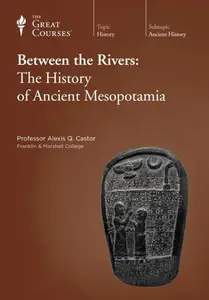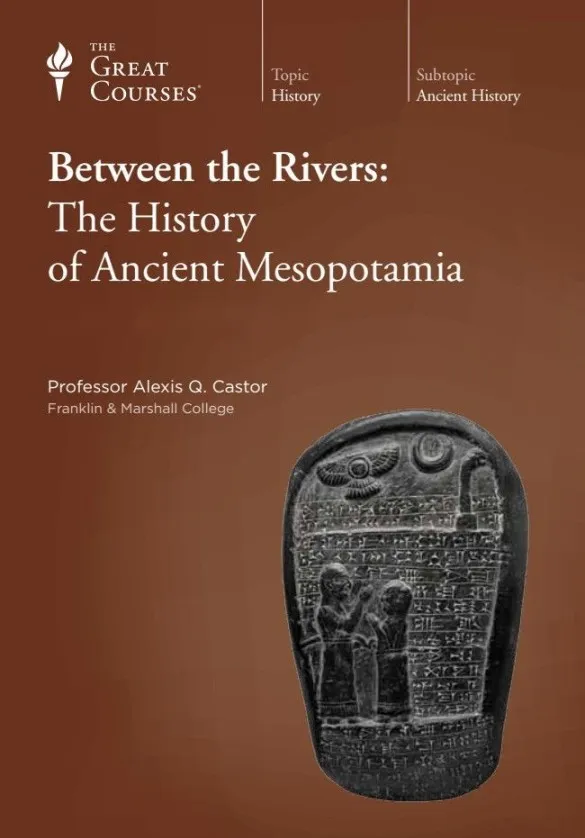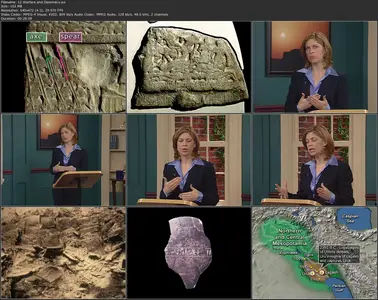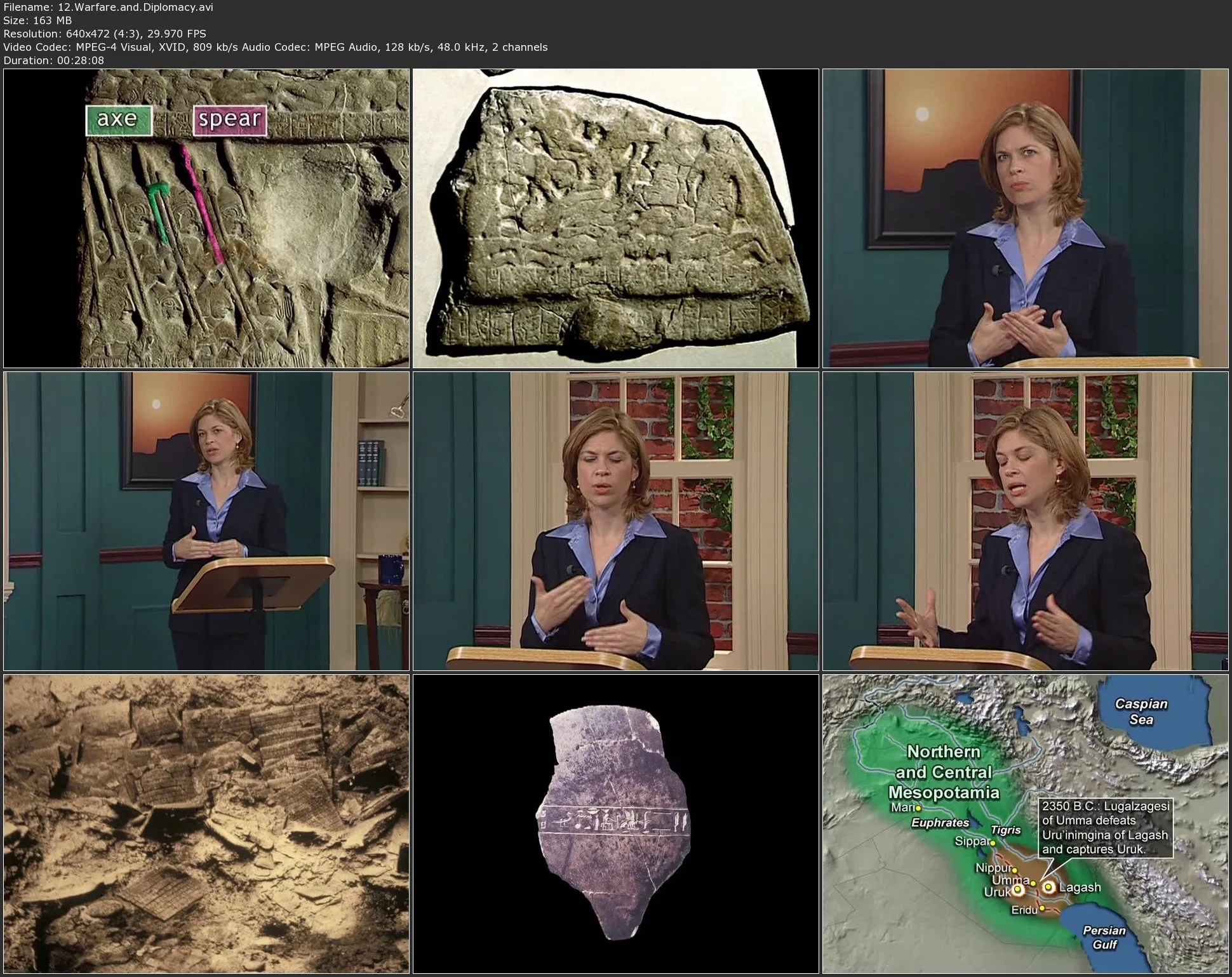TTC Video - Between the Rivers: The History of Ancient Mesopotamia
.AVI, XviD, 640x472, 30 fps | English, MP3, 2 Ch | 18h 5m | 6.22 GB
Lecturer: Alexis Q. Castor, Ph.D. Professor, Franklin & Marshall College | Course No. 3180
.AVI, XviD, 640x472, 30 fps | English, MP3, 2 Ch | 18h 5m | 6.22 GB
Lecturer: Alexis Q. Castor, Ph.D. Professor, Franklin & Marshall College | Course No. 3180
What pieces of the distant past drift before your mind's eye when you think of ancient Mesopotamia? Perhaps it's the fabled hanging gardens of Babylon. Or is it entire populations paralyzed by fear before a ruthless invader? Maybe it's priests making sacrifices to the gods who rule over and protect their city.
Any of these images may come to mind, but each one is part of the legacy of a region from which our own culture has drawn many essential aspects, including writing, codes of law, cities, and even epic poetry.
Between the Rivers: The History of Ancient Mesopotamia takes you on an insightful journey through the area bordered by the Tigris and Euphrates Rivers, from Neolithic times to the age of Alexander the Great and into the lives of mighty emperors, struggling farmers, ambitious merchants, and palace servants. In 36 fascinating lectures, award-winning Professor Alexis Q. Castor reveals new insights into the real history of this region and demonstrates that all cultures lie in the shadow of Mesopotamia.
A Foundational Time and Place
Mesopotamia, a name coined by the Greeks, means "the land between the rivers" and refers to the region now mostly encompassed by the borders of modern Iraq. Originally, the area was home to a succession of peoples, from Neolithic villagers to the vast empires of Assyria and Persia.
The beginnings of cities and urban lifestyles during the 5th millennium B.C. are only two of the many factors that make ancient Mesopotamia such a foundational time and place in history. The region was marked by the changing roles and representations of rulers and by recurring regional instabilities and upheavals. East and West collided when the Persian Empire first tried to conquer Greece and then itself became the final conquest of Alexander the Great.
Examine Life in Mesopotamia
Between the Rivers looks back to the time when the first cities arose in Mesopotamia and kings created complex bureaucracies to rule their expanding territories, thus fostering the invention of writing and other technologies. You peer into the lives and fortunes of Mesopotamia's people and learn about the birth of the urban lifestyle, which was destined to become increasingly sophisticated as cultures expanded and cities evolved into the forms we know today. Cities, as you discover, became increasingly important to the Mesopotamian identity.
The 5th-millenium B.C. city of Uruk, 140 miles south of what is now Baghdad, was in fact civilization's first city, hidden until the early years of the 20th century, when it was unearthed by German archaeologists.
With a population estimated between 20,000 and 50,000, maintaining the well-being of Uruk posed different challenges than those faced by smaller fishing villages. The large population had to develop new ways to sustain itself, producing and acquiring food and other necessities on a scale never before imagined. There would be security issues as well, and in order to solve these issues, an enclosing wall was eventually built around the city.
Throughout the lectures, Professor Castor creates a detailed image not only of larger Mesopotamian society but of life on the level of the individual Mesopotamian as well. Among the many fascinating insights into daily Mesopotamian life you examine are:
Unearth Unique Historical Finds
Scholars have come to know the details of ancient Mesopotamia through numerous archaeological discoveries, ancient documents, and important literary works, many of which you explore throughout the course. Excavations in Iraq have shaped Western ideas about ancient Mesopotamia, from the myth of the Hanging Gardens to important concepts about how Eastern cultures differed from Western cultures.
These profound historical records offer a wealth of fresh information about ancient Mesopotamian culture—new perspectives now made possible by the tireless efforts of archaeologists and historians. Among the many examples you consider are:
Embark on a True Adventure
Professor Castor has twice been named Most Influential Professor by Franklin & Marshall College's senior class. Experienced both in the classroom and on archaeological excavations, she plunges you into the daily life of Mesopotamia's vast range of cultures and animates peoples such as the Sumerians, Akkadians, Assyrians, and Medes.
In a land where the real history is even more astounding than its legends, the journey you take through ancient Mesopotamian life in Between the Rivers is a true adventure of exploration and discovery—and one you are not likely to forget.
Mesopotamia, a name coined by the Greeks, means "the land between the rivers" and refers to the region now mostly encompassed by the borders of modern Iraq. Originally, the area was home to a succession of peoples, from Neolithic villagers to the vast empires of Assyria and Persia.
The beginnings of cities and urban lifestyles during the 5th millennium B.C. are only two of the many factors that make ancient Mesopotamia such a foundational time and place in history. The region was marked by the changing roles and representations of rulers and by recurring regional instabilities and upheavals. East and West collided when the Persian Empire first tried to conquer Greece and then itself became the final conquest of Alexander the Great.
Examine Life in Mesopotamia
Between the Rivers looks back to the time when the first cities arose in Mesopotamia and kings created complex bureaucracies to rule their expanding territories, thus fostering the invention of writing and other technologies. You peer into the lives and fortunes of Mesopotamia's people and learn about the birth of the urban lifestyle, which was destined to become increasingly sophisticated as cultures expanded and cities evolved into the forms we know today. Cities, as you discover, became increasingly important to the Mesopotamian identity.
The 5th-millenium B.C. city of Uruk, 140 miles south of what is now Baghdad, was in fact civilization's first city, hidden until the early years of the 20th century, when it was unearthed by German archaeologists.
With a population estimated between 20,000 and 50,000, maintaining the well-being of Uruk posed different challenges than those faced by smaller fishing villages. The large population had to develop new ways to sustain itself, producing and acquiring food and other necessities on a scale never before imagined. There would be security issues as well, and in order to solve these issues, an enclosing wall was eventually built around the city.
Throughout the lectures, Professor Castor creates a detailed image not only of larger Mesopotamian society but of life on the level of the individual Mesopotamian as well. Among the many fascinating insights into daily Mesopotamian life you examine are:
- how they ate, worked, learned, worshipped, married, and reared children
- how their scientific ideas helped them order and understand the natural world
- how they engaged with their powerful neighbors in Egypt, Syria, and Anatolia (modern-day Turkey)
- how they waged war and experienced peace
- how they endured the collapse of their cities
Unearth Unique Historical Finds
Scholars have come to know the details of ancient Mesopotamia through numerous archaeological discoveries, ancient documents, and important literary works, many of which you explore throughout the course. Excavations in Iraq have shaped Western ideas about ancient Mesopotamia, from the myth of the Hanging Gardens to important concepts about how Eastern cultures differed from Western cultures.
These profound historical records offer a wealth of fresh information about ancient Mesopotamian culture—new perspectives now made possible by the tireless efforts of archaeologists and historians. Among the many examples you consider are:
- The 16 royal graves found at Ur: Excavated between 1927 and 1929, the royal graves from this southern city contained lavish quantities of gold, silver, semiprecious stones, and richly crafted artifacts—and also evidence of human sacrifice or ritual suicide. The overwhelming display of wealth and its grisly accompaniment offers an extraordinary demonstration of the power wielded by a Mesopotamian king and queen.
- The Amarna letters: Named after the Egyptian city in which the tablets were discovered, this trove of 14th-century B.C. correspondence includes 40 pieces of official communication between the Egyptian ruler Akhenaten (or his father) and his contemporary rulers in the Near East. Written at a time of unusually peaceful cooperation among neighboring rulers, the letters consistently reveal an attention to the niceties of Mesopotamian diplomacy, as the correspondents acknowledged gifts, proposed royal marriages, or dispatched their own personal physician to the aid of a fellow monarch.
- The 20,000 tablets found at Kanesh: Discovered at an outpost of Assyrian trade in what is now Turkey, these tablets are the most extensive documentation of merchant activity ever recorded from the ancient world. Dating from the early 2nd millennium B.C., they offer scholars a detailed portrait of the Mesopotamian trading community, including intimate glimpses into how goods were traded and the impact of long-distance trade on family life at home.
Embark on a True Adventure
Professor Castor has twice been named Most Influential Professor by Franklin & Marshall College's senior class. Experienced both in the classroom and on archaeological excavations, she plunges you into the daily life of Mesopotamia's vast range of cultures and animates peoples such as the Sumerians, Akkadians, Assyrians, and Medes.
In a land where the real history is even more astounding than its legends, the journey you take through ancient Mesopotamian life in Between the Rivers is a true adventure of exploration and discovery—and one you are not likely to forget.





